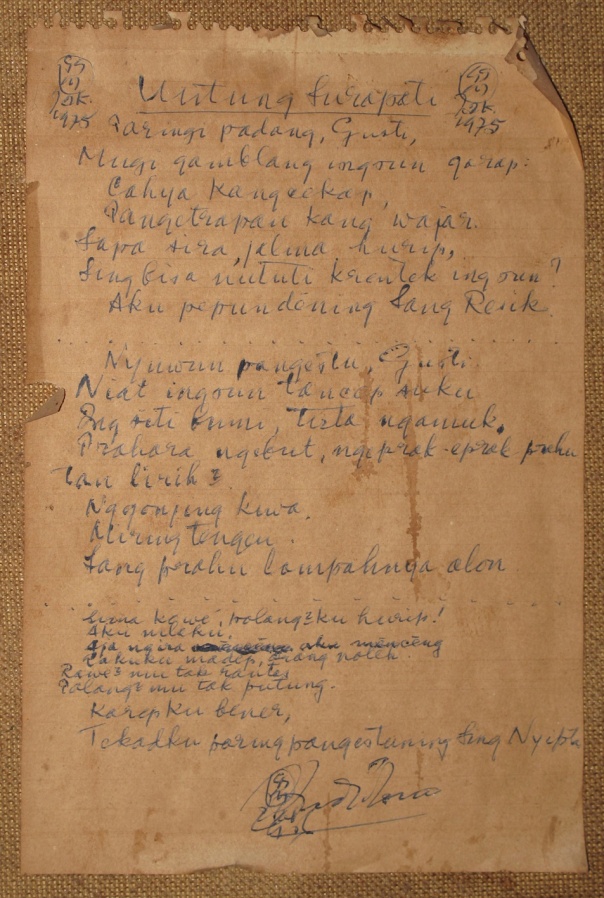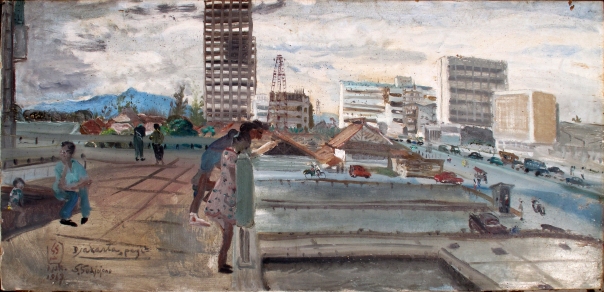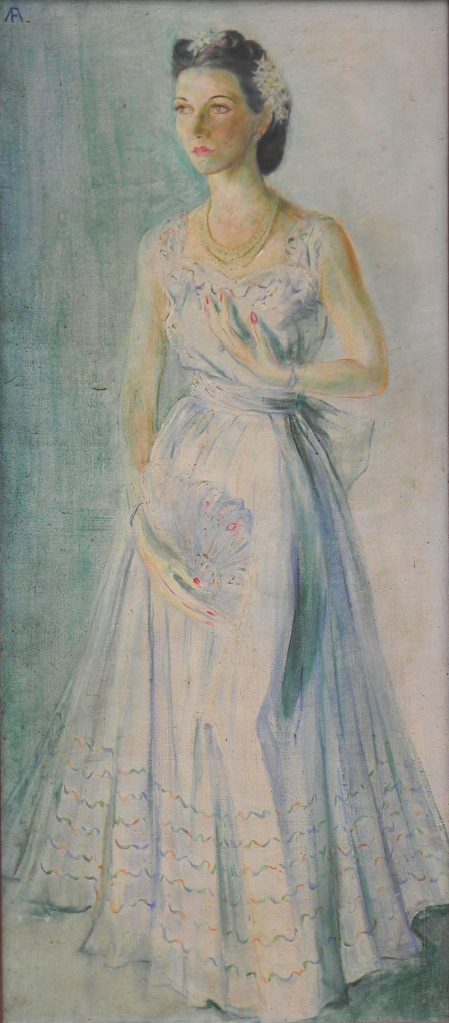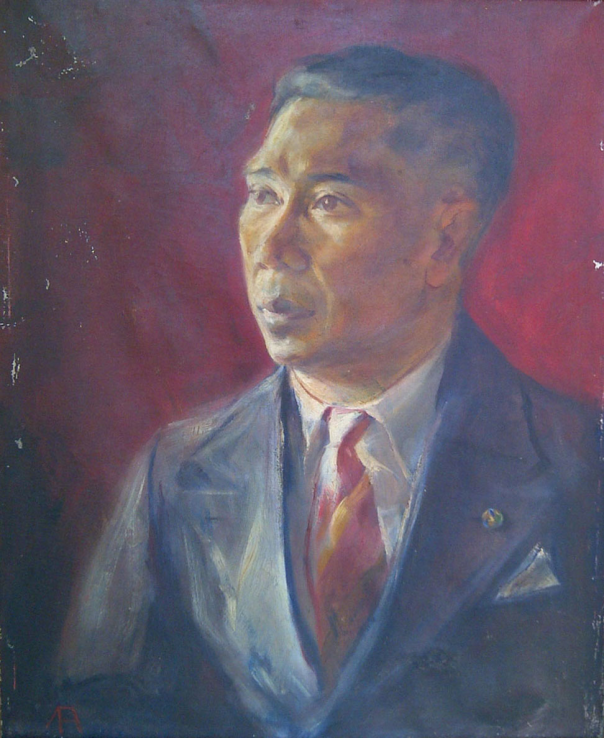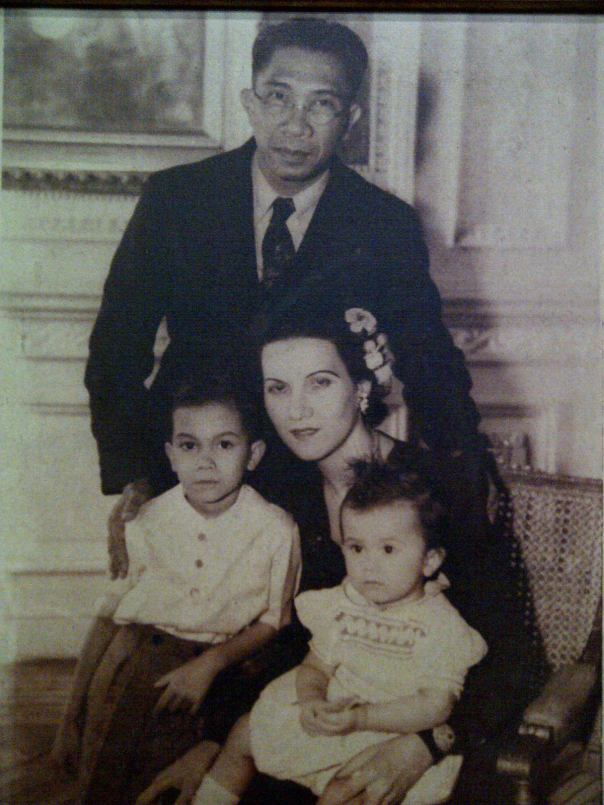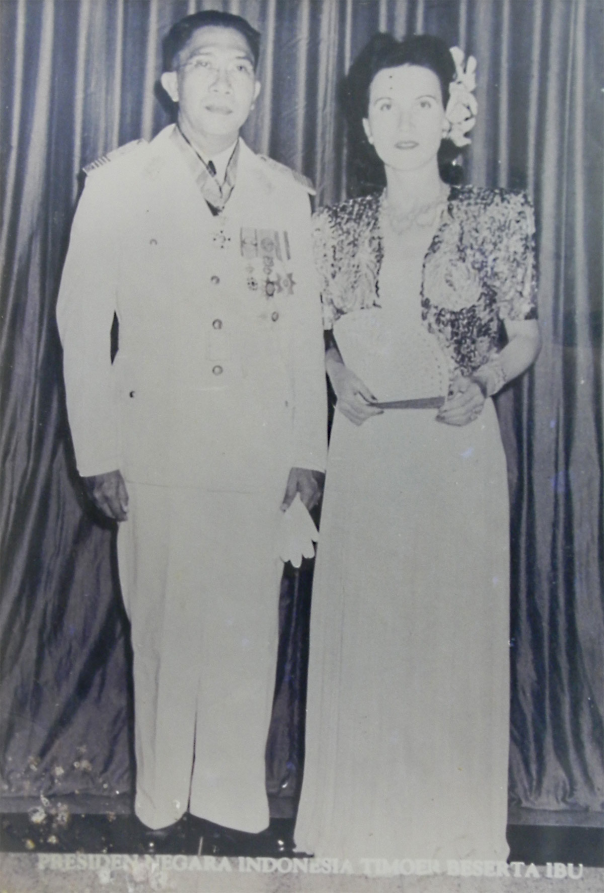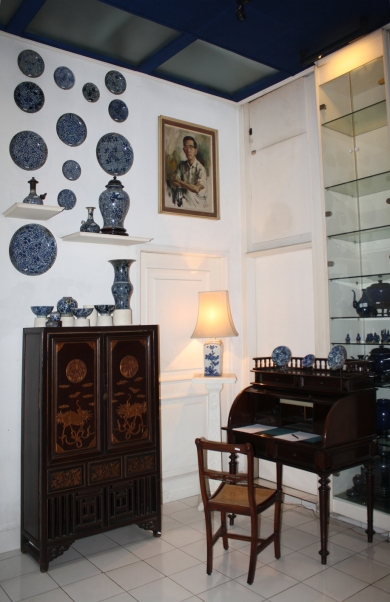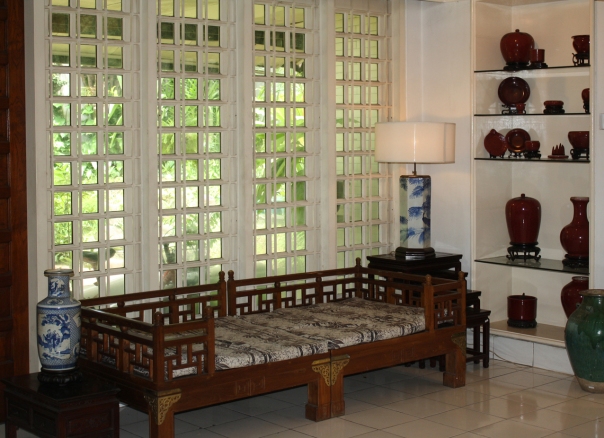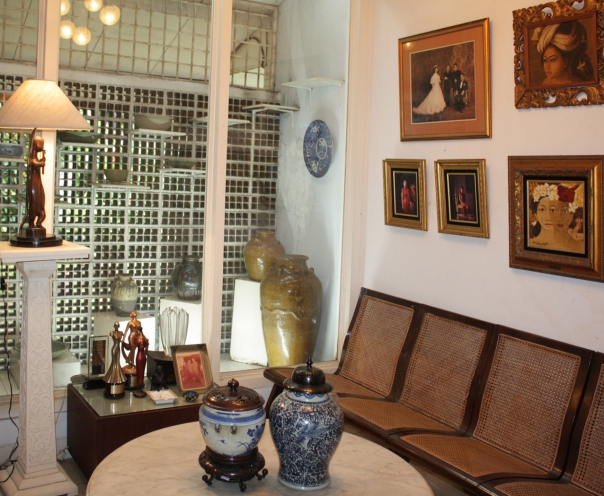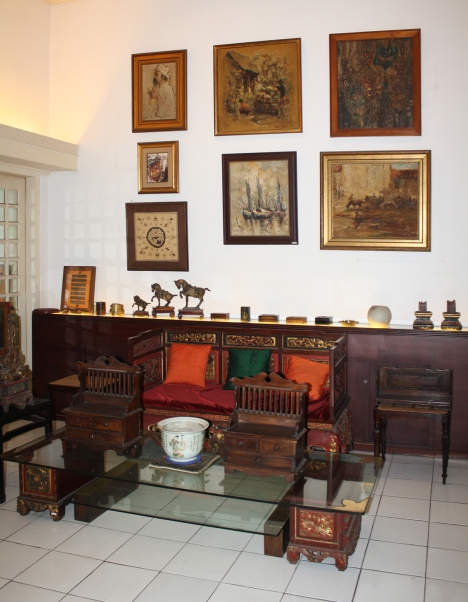[gallery]
Thomas U. Freitag – A Missionary of Indonesian Art
The passing of Thomas U. Freitag on May 3, 2013 in Denpasar, Bali marked the end of a remarkable life and personage. Curator, scholar, art critic, archivist, collector, restorer, publisher and master designer of exhibit installations, Thomas was a dynamic and seminal force on the Indonesian and Balinese contemporary art scene for more than 20 years.
Born in Germany on September 10, 1954, Thomas was the eldest son born into a cultivated family from Cologne. Born without a pancreas, his lifelong struggle with diabetes endowed him with resolute courage and the determination to excel in spite of this handicap. An artistic child, he was already an accomplished painter and dancer at the age of 15. He would attend university in Cologne during the 1970s where he studied to become a librarian, a discipline that taught him the importance of setting up archives.
Thomas was also strongly influenced by the powerful youth movements that changed his generation. Enamoured of the art and culture of foreign lands he would set up one of the first world art galleries in Cologne with his partner Sabina. An adventurer by nature he began travelling the world and first visited Bali and Indonesia in the late 1970s. His first passion was Indonesian tribal art and he would travel to remote destinations and accumulated a small but important collection of objects, which he occasionally sold to German collectors and museums.
At the end of the 1980s he went through a major change and decided to move to Bali for the rest of his life. Adopting the Balinese name of I Wayan Sukra (Sukra = Friday), he converted to Balinese Hinduism and settled in a Balinese community in Denpasar. Living off a small monthly stipend from the German government, he gave up business all together and dedicated himself selflessly to the support of the arts in Bali. He began by helping organize the Museum Ngurah Gede Pemecutan in Denpasar without any financial reimbursement. It was a habit that would continue for the rest of his life for Thomas never neither asked nor was he paid for his great contributions to Indonesian art over the years. His work at the museum culminated with an exhibition at the Frankfort Ethnological Museum organized together with Achim Sibeth with whom he co-authored the catalogue who became a close friend and future collaborator.
After a brief stint of helping with Sembilan Gallery in Ubud, Thomas was invited by the brothers Ida Bagus Ngurah and Sidharta in 2003 to set up and curate exhibitions in a new gallery on the grounds of the Griya Santrian Hotel in Sanur. Every quarter he would present a new, always surprising, show based on an intriguing theme. Spectacularly mounted with excellent lighting they were well attended and set a new standard in professionalism on the Island of the Gods. His emphasis was always on young Indonesian artists and scholars for whom he was always a friend, mentor, guide and when needed an honest critic who worked hard to make them think globally. Thomas was the first to insist that a catalogue accompany every exhibition. His emphasis on documentation was legendary and ended up with a huge and well organized archive.
Many of the biggest names in Balinese and Indonesian art can be counted as his close friends including I Nyoman Masriadi, Nyoman Gunawan, Putu Sutawijaya, Putu Wirantawan and Mangu Putra and a significant number of the works in this auction were given to him as gifts to thank him for his support and advice. Thomas also helped numerous projects and scholars gathering information and giving access to his archives. He was also a keen supporter of the traditional arts and played a major role in the research for Adrian Vickers’ recent book on Balinese painting.
Survived by his beloved Balinese wife Ni Wayan Sulasih, whom he married in 2000 and their son Teja, the number of friends and artists who attended his memorial ceremony and cremation stand as testimony of his influence. A passionate collector, the paintings here were the heart of his private collection. All of them were in his eyes masterpieces that illustrated one of the most remarkable periods in the history of Indonesian art. Before passing away Thomas personally choose Sidharta Auctioneers to auction his beloved collection for the benefit of his wife and son. In his eyes works of art are like children. They are close to us and stay with us but eventual travel on to new lives of their own. It is our wish that these travel on to new homes where they can be loved as Thomas loved them.
Bruce W. Carpenter
As short bibliography of his more important works:
Freitag, T.; Reality of Abstract Painting; I Made Supena, Denpasar, Bali, PT Dian Rakyat 1999
Freitag, T.; Moksa; Nyoman Gunarsa, Klungkung, Bali, Nyoman Gunarsa Museum, 2003
Freitag, T. with Vidyasuri Utami, T.; The Paintings of Ni Nyoman Sani, Yogyakarta, Kotakotak, 2006
- - - - - - - - - - - - - -- - - - - - - - - - - - - - - - - - - - - - - - - -- - - - - - - - - - - - - - - - - - - - - - - - - -- - - - - - - - - - - - - - - - - - - - - - - - - -- - - - - - - - - - - -
Thomas Freitag's Legacy
Thomas Freitag was an eccentric, as everyone who had met him will tell you. One of his great eccentricities was his commitment to advancing Indonesian Contemporary Art, and Indonesian art in general, in a context where there is no public support for such art, and the private sphere is dominated by market pressures. The legacy of his abbreviated life is his contribution to work of artists, and to explaining their work to the world.
I first became aware of Thomas in 1999 when he, working with Achim Sibeth, produced the catalogue of paintings from the Museum Ngurah Gede Pemecutan for the Museum für Volkerkunde, Frankfurt. This was the first catalogue to bring international attention to younger contemporary artists, notably I Made Supena, I Ketut Susena and Made Mahendra Mangku, whose work Thomas also collected for himself. The catalogue linked Balinese artists working in the Ubud style pioneered by the 1930s association Pita Maha; with that of artists who continued the ‘Beautiful Indies’ style of the colonial era, such as Sudiro; and modern and contemporary Indonesian artists, notably Nyoman Tusan, the pioneer of semi-abstract art with mystical Balinese themes; and Made Budhiana, who inspired younger Balinese artists to work in abstract art. Sudiro’s “Temple” from that catalogue became part of Thomas’ collection, and is included in this sale, as are other works by the leading artists trained in Yogyakarta in the 1970s and 1980s, including Nyoman Erawan, and paintings by Supena, Susena and Mahendra Mangku.
I did not meet Thomas in person until some five years later, when he asked me to write a contribution to the catalogue of an exhibition by Jango Pramartha of his cartoons. It was here that I learned of what Thomas’ extraordinary project of curating exciting exhibitions for the Griya Santrian Gallery in Sanur. The Gallery wisely gave Thomas the opportunity to further his work with new and established artists based in Bali, and to expand the understanding of the Indonesian art scene. There were some precedents for showcasing modern and contemporary art in Bali: before the Pamecutan Gallery and the Tanjung Sari Hotel’s experimental Nata Ayu Gallery of the early 1990s. Nata Ayu’s curator. Ambar Arini, then went on to found the important Ganesha Gallery at the Four Seasons Hotel, under the guidance of Bruce Carpenter. It was Ganesha Gallery that held the first retrospective on a solo Balinese artist, with its Ida Bagus Nyoman Rai exhibition, and this important move was one of a number of initiatives that showed Thomas what could be achieved. In the late 1990s the Sika Gallery became Ubud’s first Contemporary Art showcase.
At Griya Santrian Gallery, Thomas wanted to bring a broader art historical understanding to the presentation of Indonesian art. He always emphasised the importance of the collective nature of Balinese art, and one of his first Griya Santrian Gallery exhibitions in 2003 was of the group Galang Kangin. Soon afterwards he put together an exhibition of Sanur painting, demonstrating how modern and contemporary artist were interrelated with the almost-forgotten Sanur School of the 1930s. His catalogue essays and other unpublished analyses, written under his Balinese name of Wayan Sukra, linked Contemporary forms to the deep cultural roots of Indonesian art, and showed how Indonesian artists fitted into the global art scene.
Thomas and I worked together closely on a number of those projects, aimed at connecting Balinese art history to the Contemporary. The high points of our collaboration were the I Nyoman Mandra retrospective of 2009, and his support in my research project on Balinese art, without which my book Balinese Art: Paintings and Drawings of Bali 1800-2010, could not have been written. The Nyoman Mandra exhibition was taken up by Sangkring Gallery in Yogyakarta, whose owner Balinese-born Contemporary artist Putu Sutawijaya, reinforced the link between Mandra’s Classic Kamasan style and the roots of Modern and Contemporary art from Bali.
Such exhibitions were part of Thomas’ engagement with a more rigorous understanding of Indonesian art, which led him into debates with leading art critics, and an insistence on resisting the urge to mass produce low-quality art to satisfy the demands of the growing market. The artists with whom he worked recognised and responded to that disciplined approach, and have paid tribute to his importance.
.For the e-catalog, click here:
http://www.sidharta.co/fa2013/

